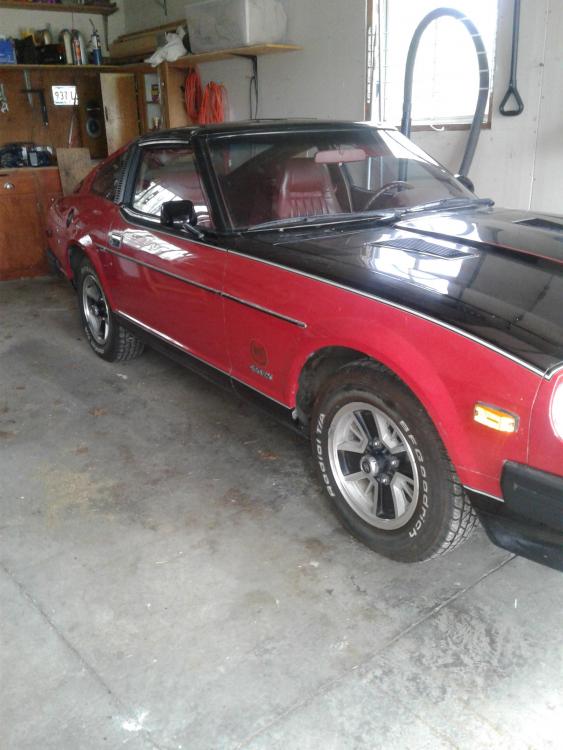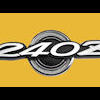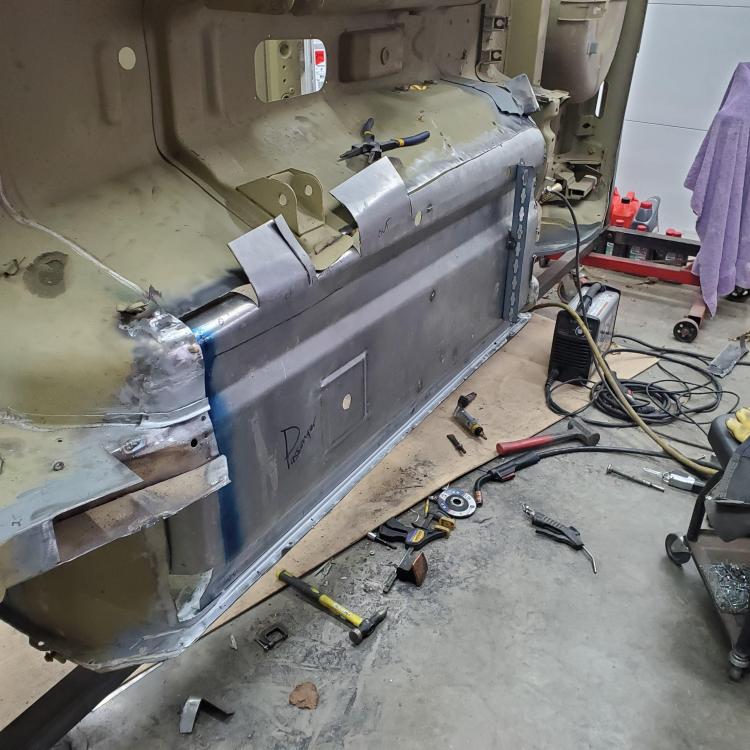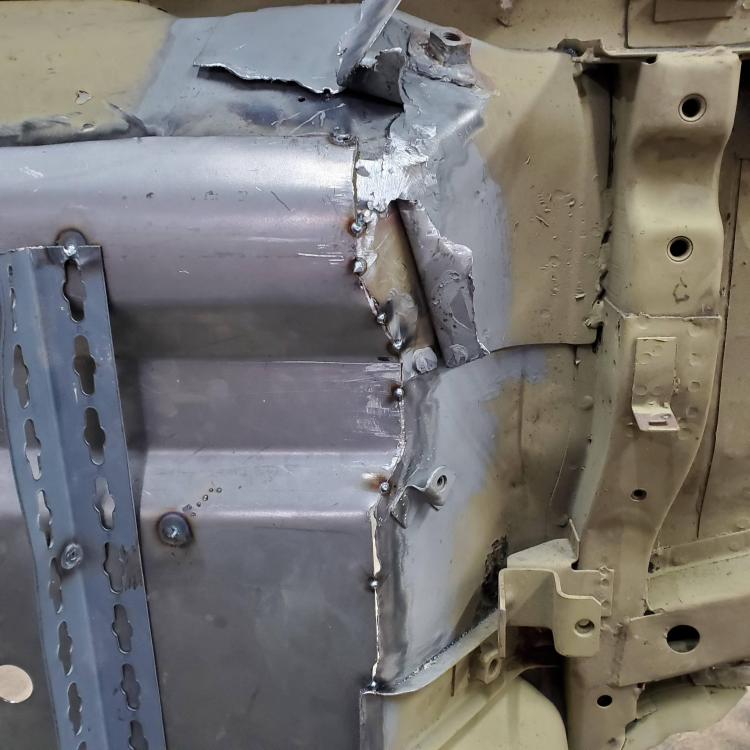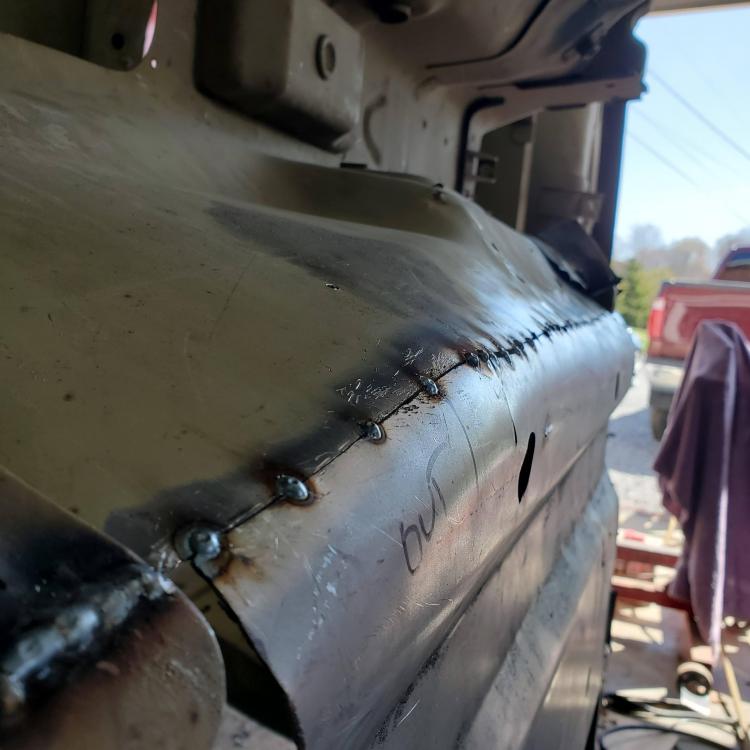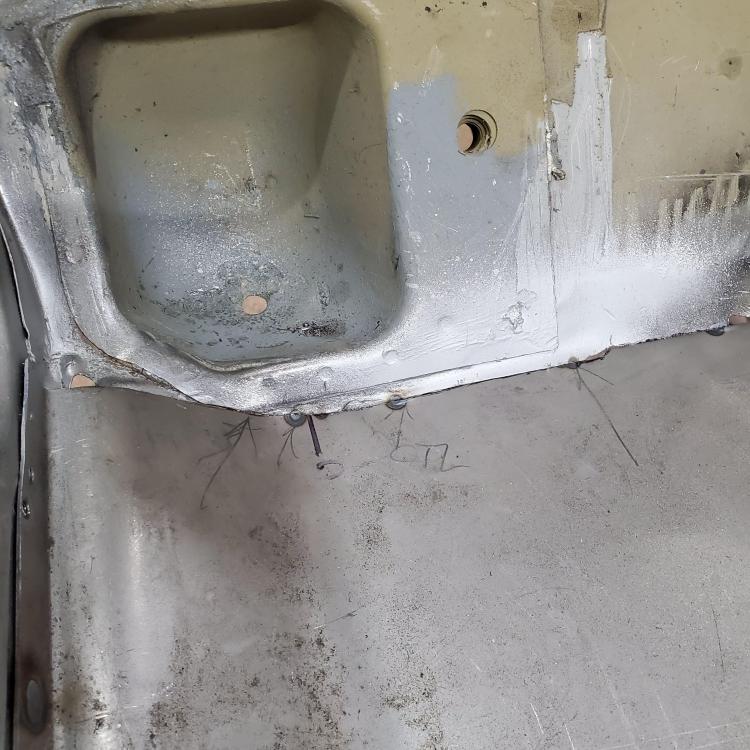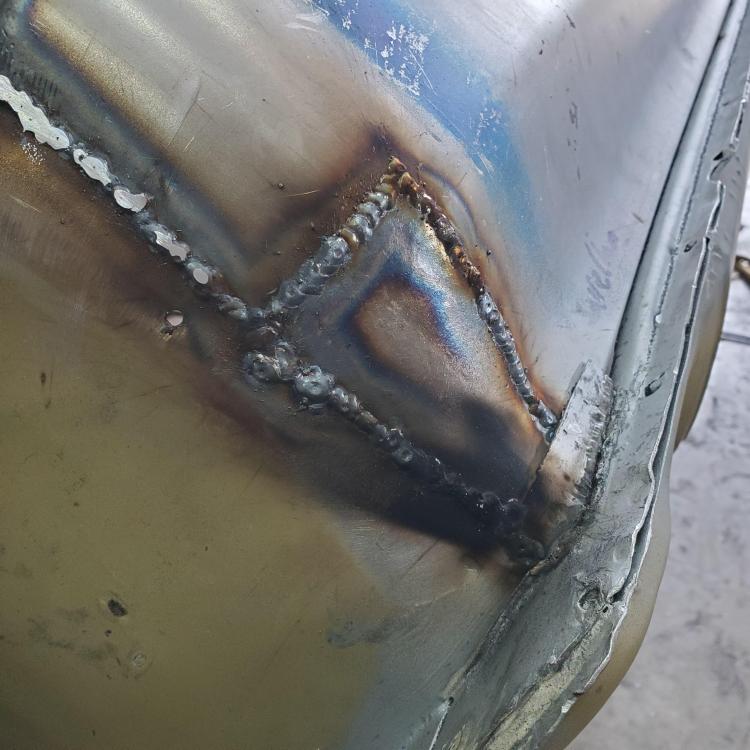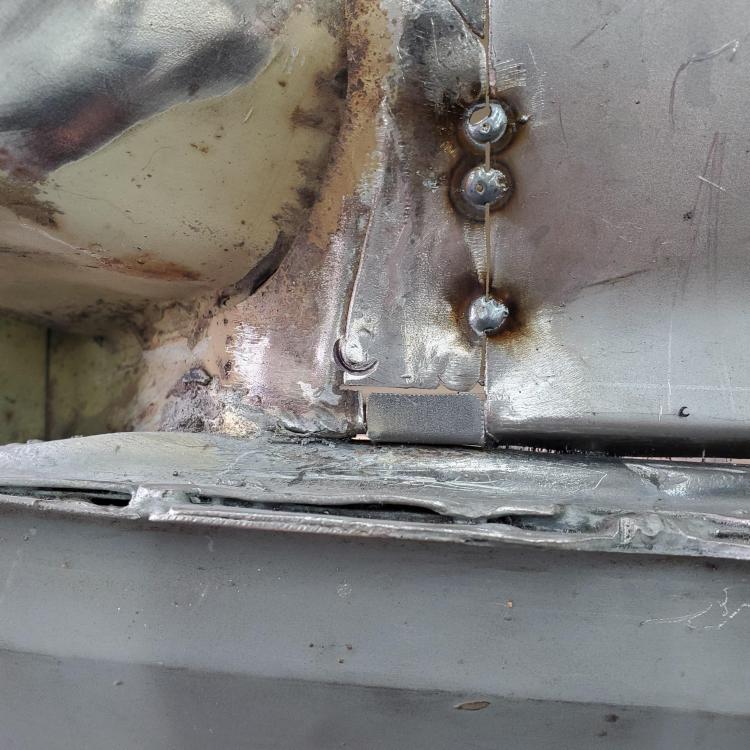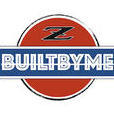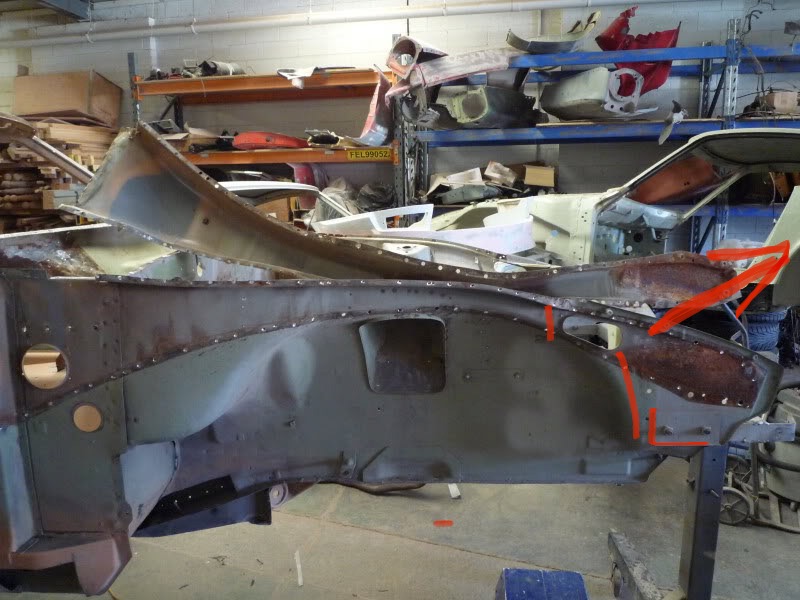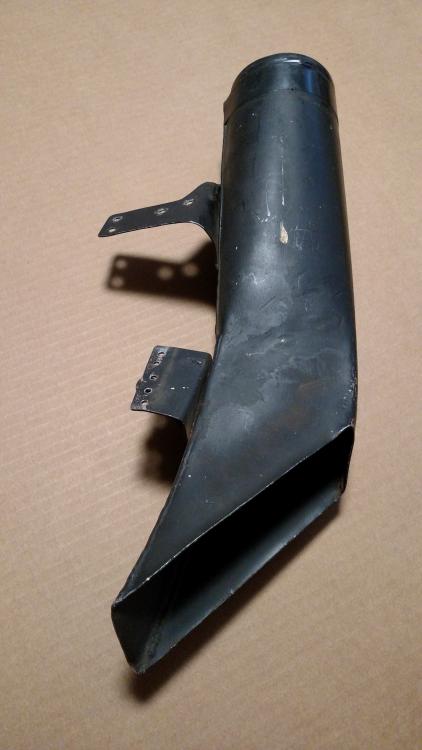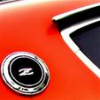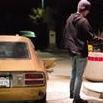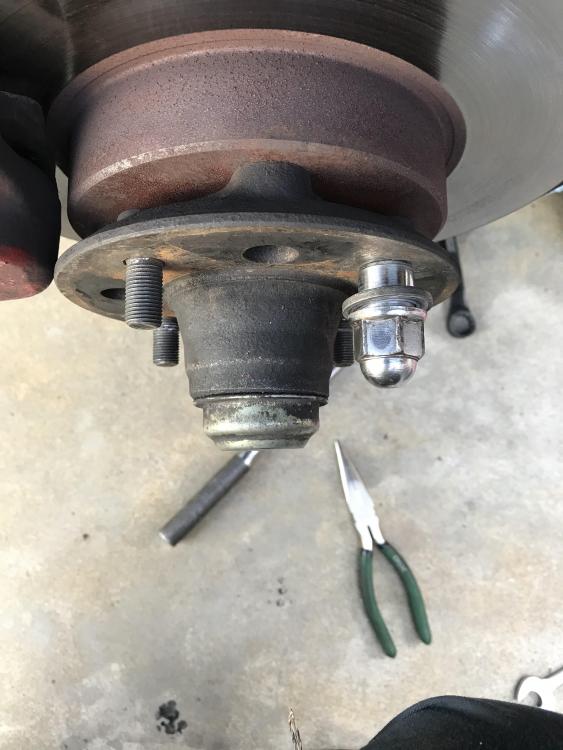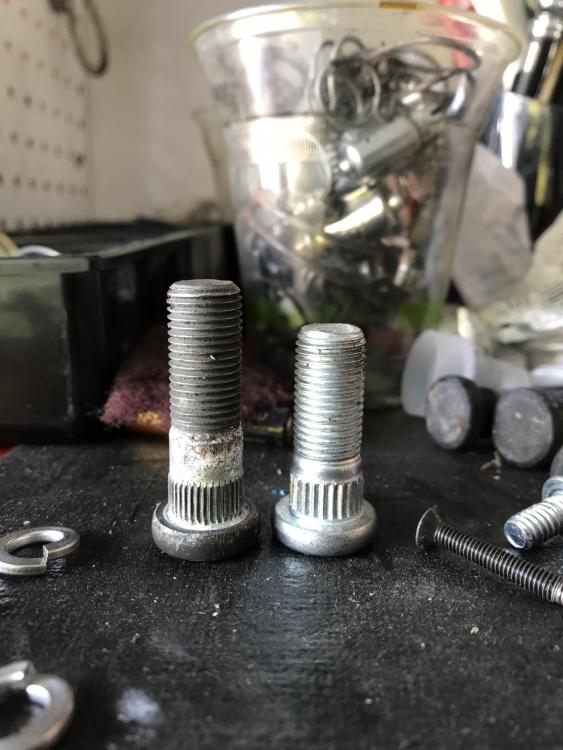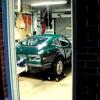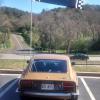Further to Patcon's suggestion, you could also consider sliding a next-side-up extension tube over the end of the longitudinal floor runner of your frame rig and then using that as a reaction structure (i.e. put the bottle jack between the extension piece and the lever arm). Depends on how long the existing frame 'stub' is. I don't think I'd try this unless that stub is at least 18" long (which your pictures suggest to be the case). The reaction load (which would be tension, not compression) would be taken out of the vehicle structure through the front-most support point of your frame rig. Right now, I believe that is at either the front crossmember location -- which is a good distance back from the rad bulkhead. I'd like to see the reaction load being taken up further forward. Maybe you could rig up a chain, looped over the lower part of the rad bulkhead and then anchored to the top of the new extension tube by way of a couple of (sturdy) welded-on eye-bolts. Include turnbuckles in the two chain drops so that you can pre-tension the chain.
While considering how this 'adjustment' might take, it may help to stare at the following two pictures for a few minutes while asking yourself, 'What panels deformed during the collision event?' and then, 'How can I un-do that deformation?'. The panel's main strength in the vertical bending plane comes from that long doubler panel (which has been removed by the owner in the top picture). It works with the main stamping to form a box section (which is sometimes referred to as the upper frame horn). However, notice how that box section is weakened near the front by the big hole punched in the main panel to form the fresh air inlet for the car's cabin ventilation system. I suspect that that's where the deformation happens in a front-end collision. In fact, in the lower picture it almost looks like the outer wall of the doubler plate has been kinked. For reference, I've added a third picture showing a pair of virgin OE doubler plates.
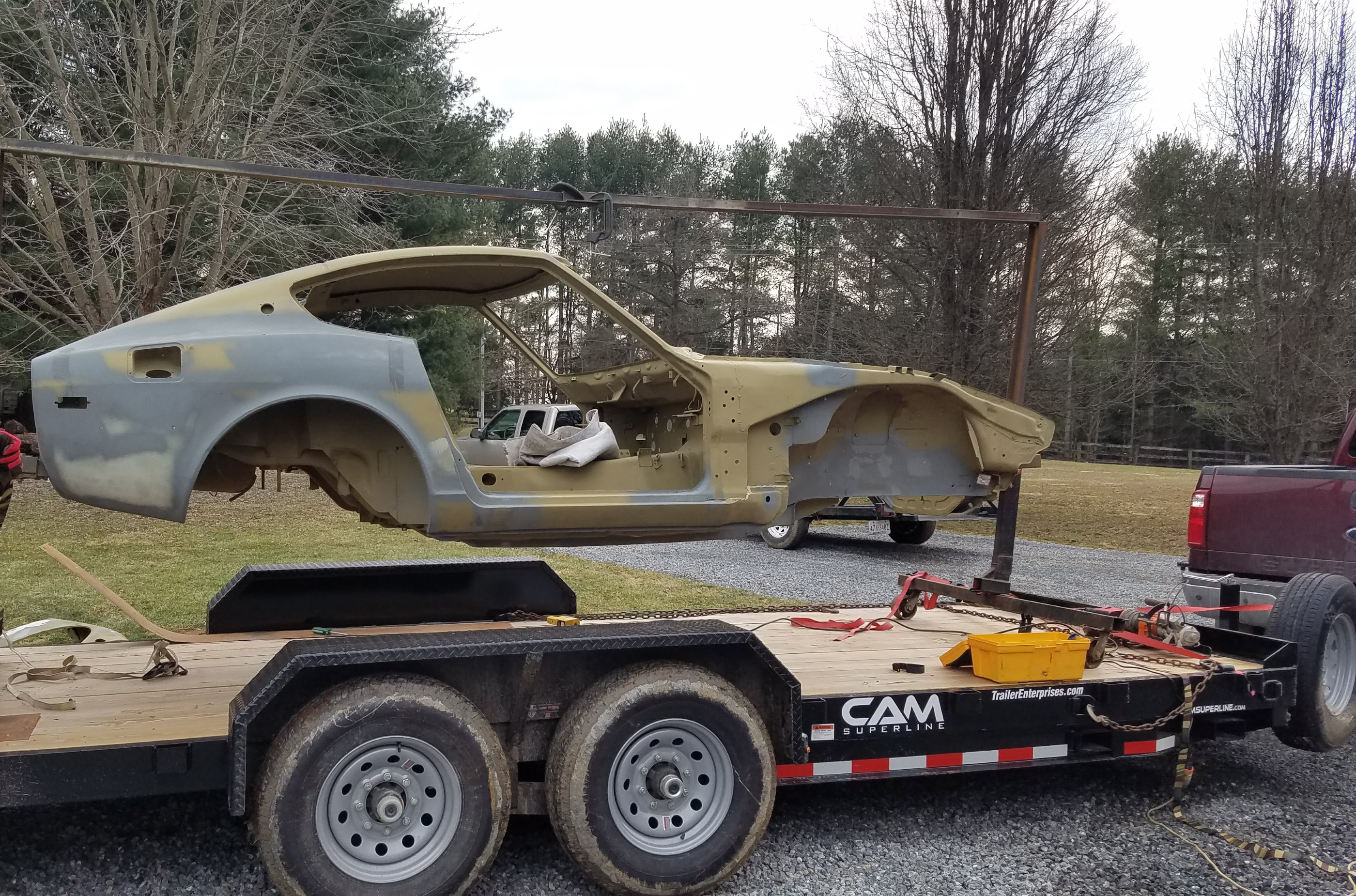
 Subscriber
Subscriber 3Points383Posts
3Points383Posts






